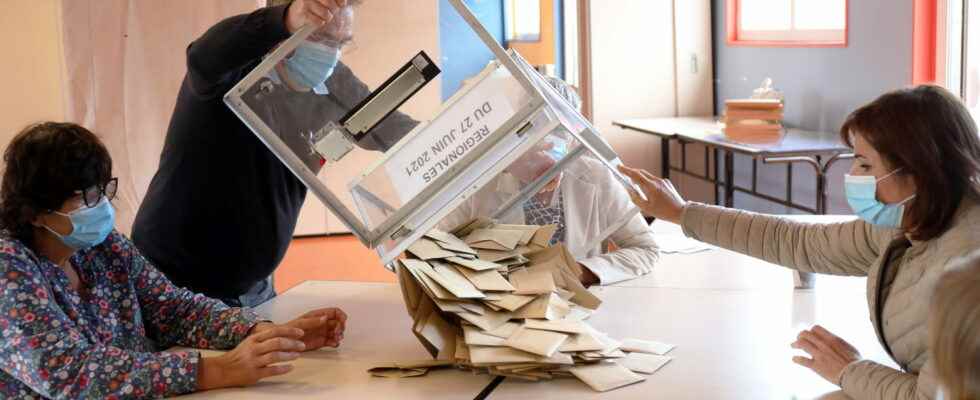PARTICIPATION. How high will the participation rate be in the first round of the legislative elections this Sunday, June 12, 2022? The first signs point to weak mobilization and a declining turnout. Will we beat the sad record of 2017? Here’s what you need to know on the eve of the election.
[Mis à jour le 11 juin 2022 à 09h10] French voters are called to go to their polling stations this Sunday, June 12 for the first round of the 2022 legislative elections. But how many of them will actually cast a ballot in the ballot box? A good part of the ballot could depend on this simple question since the participation rate promises to be a key factor in this first round of the 2022 legislative elections. Remember that a candidate must bring together 12.5% of the total number of registered voters in his constituency. to qualify for the second round. A very strong abstention makes the challenge extremely difficult to complete.
These elections, which aim to appoint the 577 new deputies forming the National Assembly for the start of Emmanuel Macron’s second term, come two months after a presidential election where many voters had not mobilized. The participation rate thus peaked at 73.69% in the first round and 71.99% in the second round according to official figures provided by the Ministry of the Interior after the election. As a result, these legislative elections could well beat the record of 2017 when these same elections had recorded figures never seen for legislative elections: 48.7% in the first round and 42.64% in the second round.
What was the participation rate in the last legislative elections?
In 2017, the participation rate was the lowest ever recorded in legislative elections: 48.7% in the first round and 42.64% in the second round. Overall, we note a gradual disaffection of voters for the polling stations with a clear break since the establishment of the five-year term which has led to a modification of the electoral calendar and made the legislative elections a continuation of the presidential election. In 2012, the participation rate was 57.22% in the first round and 55.40% in the second round and in 2007 60.44% in the first round and 59.99% in the second round.
What did the polls say about participation in these legislative elections?
The low mobilization recorded during the last presidential election suggests record abstention according to several polling institutes which have published analyzes in the light of the last days of the electoral campaign. According to one Ipsos and Sopra-Steria study for Cevipof, the Jean Jaurès Foundation and Le Monde published on June 8, 2022, the interest of the French for these legislative elections is at half mast and has even dropped in the home stretch before the ballot this Sunday. In two weeks, interest in the panel of 10,000 voters in the survey has gone from 74% in mid-May to 70% one week before the election, while the intention to vote drops below 50%, within a range ranging from 44 to 48%. This would place the participation in this first round of the legislative elections below that recorded in 2017 during this same first round (48.7%).
Which political formation could suffer the most from this weak mobilization? According to Ipsos Sopra Steria, all age groups are affected by this very low interest in the legislative elections, but the youngest are the most reluctant to go to the polls this Sunday: among 18-24 year olds, only 7 % say they are “certain to vote”, compared to 36% among 25-34 year olds, 38% among 35-49 year olds, 42% among 50-59 year olds, 55% among 60-69 year olds and 65% in people over 70. At the level of the political spectrum, the LREM-Modem sympathizers surveyed are the most mobilized: 60% intend to vote against 51% for left-wing sympathizers and 50% for those close to the National Rally.
Why is the participation rate in this first round of legislative elections a key factor?
Political observers have considered for several days that the participation rate is, whatever happens, a structuring element of the ballot, even more so in the context of these legislative elections. To qualify for the second round, a candidate must effectively bring together 12.5% of the total number of registered voters, a real challenge in the context of an election where abstention is reaching peaks. In fact, abstention says a lot about the way in which the French consider the democratic exercise of the vote, at a time when taking part in the vote is no longer necessarily a necessity, nor even a pillar of political life in the eyes of many citizens. Note that the services of the Ministry of the Interior, which are in charge of the organization and the proper conduct of the ballot, give updated rates of participation and abstention at noon and 5 p.m. Estimates are generally released at 8 p.m. by polling institutes and then later in the night, the participation rate is consolidated with final figures and transmitted by the services of Place Beauvau once all the data from the polling stations have been counted. .
